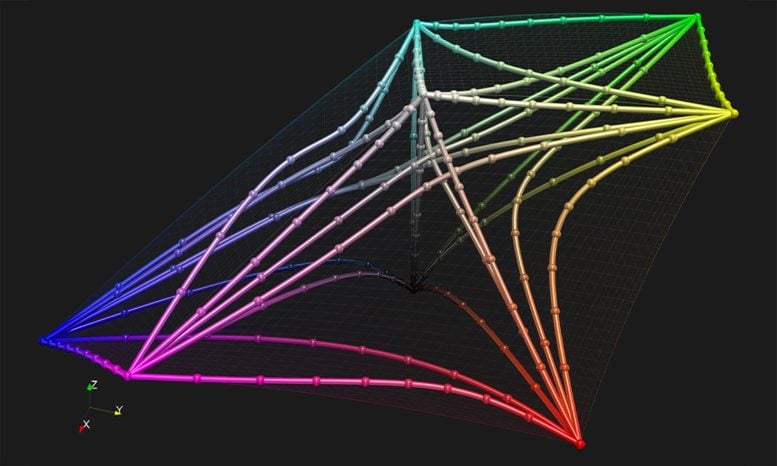
This visualization captures the 3D mathematical space used to map human color perception. A new mathematical representation has found that the line segments representing the distance between widely separated colors don’t add up correctly using the previously accepted geometry. The research contradicts long-held assumptions and will improve a variety of practical applications of color theory. Credit: Los Alamos National Laboratory
A paradigm shift away from the 3D mathematical description developed by Schrödinger and others to describe how we see color could result in more vibrant computer displays, TVs, textiles, printed materials, and more.
New research corrects a significant error in the 3D mathematical space developed by the Nobel Prize-winning physicist Erwin Schrödinger and others to describe how your eye distinguishes one color from another. This incorrect model has been used by scientists and industry for more than 100 years. The study has the potential to boost scientific data visualizations, improve televisions, and recalibrate the textile and paint industries.
“The assumed shape of color space requires a paradigm shift,” said Roxana Bujack, a computer scientist with a background in mathematics who creates scientific visualizations at Los Alamos National Laboratory. Bujack is lead author of the paper on the mathematics of color perception by a Los Alamos team. It was published in the Proceedings of the National Academy of Sciences.
“Our research shows that the current mathematical model of how the eye perceives color differences is incorrect. That model was suggested by Bernhard Riemann and developed by Hermann von Helmholtz and Erwin Schrödinger — all giants in mathematics and physics — and proving one of them wrong is pretty much the dream of a scientist.”
Modeling human color perception enables automation of image processing, computer graphics, and visualization tasks.
A Los Alamos team corrects math that has been used by scientists, including Nobel Prize-winning physicist Erwin Schrödinger, to describe how your eye distinguishes one color from another.
“Our original idea was to develop algorithms to automatically improve color maps for data visualization, to make them easier to understand and interpret,” Bujack said. So the research team was surprised when they discovered they were the first to uncover that the longstanding application of Riemannian geometry, which allows generalizing straight lines to curved surfaces, didn’t work.
A precise mathematical model of perceived color space is needed to create industry standards. First attempts used Euclidean spaces — the familiar geometry taught in many high schools. Later, more advanced models used Riemannian geometry. The models plot red, green, and blue in the 3D space. Those are the colors registered most strongly by light-detecting cones on our retinas, and — not surprisingly — the colors that blend to create all the images on your RGB computer screen.
In the study, which combines psychology, biology, and mathematics, Bujack and her colleagues discovered that using Riemannian geometry overestimates the perception of large color differences. This is because humans perceive a big difference in color to be less than the sum you would get if you added up small differences in color that lie between two widely separated shades.
Riemannian geometry cannot account for this effect.
“We didn’t expect this, and we don’t know the exact geometry of this new color space yet,” Bujack said. “We might be able to think of it normally but with an added dampening or weighing function that pulls long distances in, making them shorter. But we can’t prove it yet.”
Reference: “The non-Riemannian nature of perceptual color space” by Roxana Bujack, Emily Teti, Jonah Miller, Elektra Caffrey and Terece L. Turton, 29 April 2022, Proceedings of the National Academy of Sciences.
DOI: 10.1073/pnas.2119753119
Funding: Laboratory Directed Research and Development Program of Los Alamos National Laboratory.

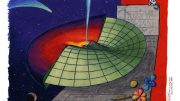

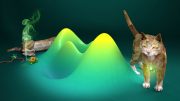

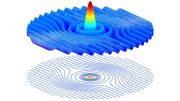
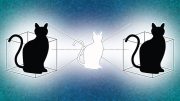


“…. and proving one of them wrong is pretty much the dream of a scientist” Really? I would have thought reaching the truth would be the dream of a scientist rather than discrediting a colleague.
“[P]roving one of them wrong” is, perhaps, a poor choice of words but I think what the author is expressing is the enormous respect and admiration she (and others in the field) have for giant intellects like Riemann, von Helmholtz and Schrodinger.
That’s the point. There is no “truth”, just consensus and refinement
Same problem as is the dream reality or is the reality a dream ? Experience, language, subjective reality is always a bridge too far … so far !
I had always had poor eye sight, I also had a lot of trouble driving at nighttime and could never read the street signs, then say I did dmt with a friend of mine and immediately everything was so vibrant, I could see everything so clearly and everything was so sharp, I had never seen a world so crisp , I had no idea that colors could be like that, it was amazing, and then the drug wore off 15 minutes later and I was back to having my poor eye sight again, then I got to thinking if my eyes are capable of seeing everything so beyond perfect , then why do I not actually see with them that way, so I came up with the idea that my poor eye sight is just years my own brainwashed negativity, and I started to think that poor eye sight must be all in my head and that if I trained my brain to know I can actually see good then I will, so ever since then when I start to have a spec of trouble seeing something I tell myself it’s all in your head and that I can actually see good, and omg it has worked, I can see fine,
I can drive at night fine, I can read the street signs fine, I have begin to realize how powerful our brains out and how mind over matter is really important and can change a lot, anyways I just thought I would share that with everyone
@Domonique
That’s an incredible experience you’ve had. I’m so glad to hear that you were able to overcome your visual issues with the power of your mind. It’s possible to do so much when we truly realize this: that we are vibrations of light, vibrations of frequency organizes our bodys, our thoughts, emotions, and the reality around us. You know.. The only reason why you cannot move your have through a solid object is because there is a vibrational force that stops it in the form of particles.